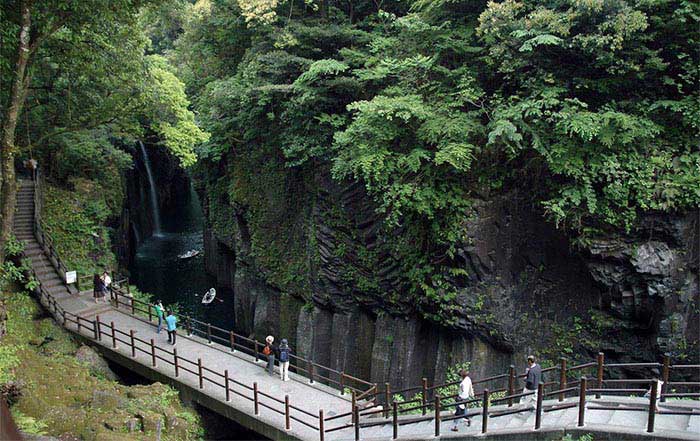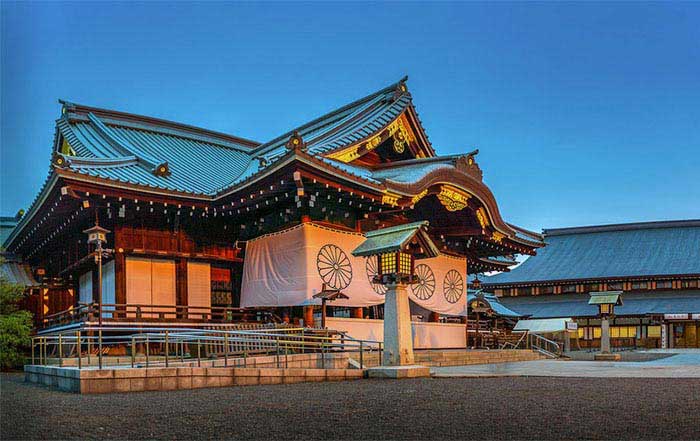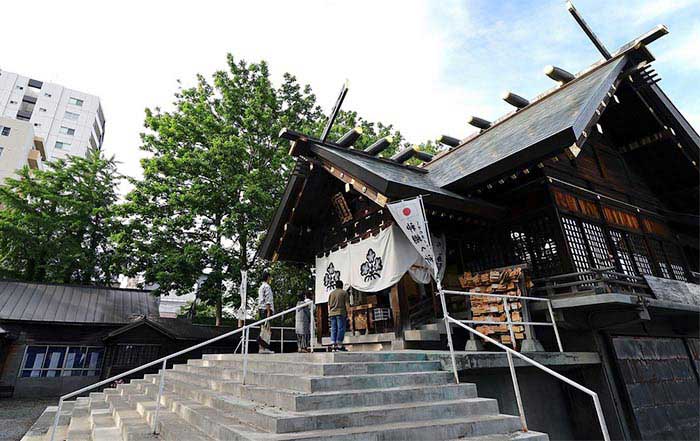Kyushu is bubbling with energy, culture and activity, it is easily reached by land, sea and air.
Japan's third-largest island is internationally famous for its tonkotsu ramen, varied hot springs, dramatic mountains, and peaceful beaches. While the startup hub of Fukuoka bubbles with international attention, the volcanic terrain to the south continues to rumble and smoke. The seismic activity has created a craggy wonderland of eight steaming hot spring areas, known collectively as Beppu Onsen, as well as soaring peaks to hike, such as Mt. Karakuni in the Kirishima mountain range. Offering a taste of both cutting-edge modernity and slow-paced living, Japan's southern island is best explored at a leisurely pace. Head south to relax on an island bursting with spectacular nature, culture and cuisine.
Fukuoka Prefecture's most famous attraction is Dazaifu Tenmangu, a shrine dedicated to the historical scholar and politician Michizane Sugawara and home to over 6,000 plum trees that blossom spectacularly each spring. The prefecture's culinary specialties include sushi and other seafood dishes, yakitori or grilled skewers, motsunabe hot pot in the winter, and tonkotsu or pork broth ramen, best enjoyed at a local yatai or food stall. Located on the northern tip of Kyushu and boasting excellent transportation links, Fukuoka is an easy destination.
Located in Kyushu's northwest, Saga offers plenty of natural wonders, history and artistry. It's famous for being the birthplace of ceramics in Japan, chiefly in the historic pottery towns of Karatsu, Arita and Imari, and has been influenced by Chinese and Korean culture. The Saga Castle History Museum and Nagoya Castle hint at Saga's feudal past, while natural attractions include the sea caves of Karatsu, and Rainbow Pine Grove, a Japanese black pine forest stretching five kilometers from east to west along Karatsu Bay. Hot spring areas include Takeo Onsen and Ureshino Onsen, prime spots for mental and physical relaxation.
Nagasaki was Japan's early gateway to trade with the West, and this influence still shines through in its districts of stately European-style homes and a large Christian population. Historically strong links to China and Korea further inflect modern Nagasaki, although the prefecture features tombs and ruins dating back to the third century B.C. Unspoiled beaches and island getaways surrounded by crystal-clear seas that draw swimmers, divers, and sea kayakers, while the island of Tsushima attracts eco-tourists with its flora and fauna.
Oita Prefecture is a place to relax the body and get in touch with nature. The most iconic onsen towns are Beppu & Yufuin, overflowing with Bohemian charm, and Beppu, home to eight hot springs that have been popular since ancient times. Jutting out to the north of Oita, Kunisaki Peninsula is home to historic spiritual sites nestled against lush mountainsides, while inland areas centered in the western part of the prefecture are full of rustic countryside charm and plenty of rare flora and fauna.
Despite suffering damage in the 2016 Kumamoto earthquake, the region was quick to rebound and continues to welcome tourism. Surrounded by mountains, the landscape is shaped by volcanic activity. Aso is known for its huge caldera containing villages and farms. Kumamoto Castle is one of the country's most imposing, and Kurokawa Onsen retains a quaint, traditional feel.
Miyazaki is a renowned haven for outdoor sports enthusiasts, boasts gorgeous coastal drives and is home to incredible seaside shrines. Miyazaki Shrine, Amanoiwato Shrine and Takachiho Shrine are associated with the myth of the birth of Japan, and feature lively annual festivals that celebrate Miyazaki's significant place in Japanese mythology. Takachiho Gorge and the 17-meter Manai Falls are breathtaking and a prefectural highlight. Kisakihama, Okuragahama, Uchiumi and Aoshima are popular for their surf. Seagaia, a 20-minute drive from Miyazaki Station, is a comprehensive resort complex complete with a hotel, convention center, and golf courses.
At the southern tip of mainland Japan, Kagoshima Prefecture is nicknamed the "Naples of the East" for its bay and comfortable climate. The prefecture is incredibly active geologically and is home to the great volcanoes of Mt. Kirishima and Mt. Sakurajima. A beneficial side effect of these volcanoes is a number of fantastic hot spring (onsen) facilities that range from traditional baths to beachside sand baths in the shadow of Sakurajima. Island life is one of the charms of Kagoshima Prefecture, and any visitor should consider spending as much time as possible off the mainland.




